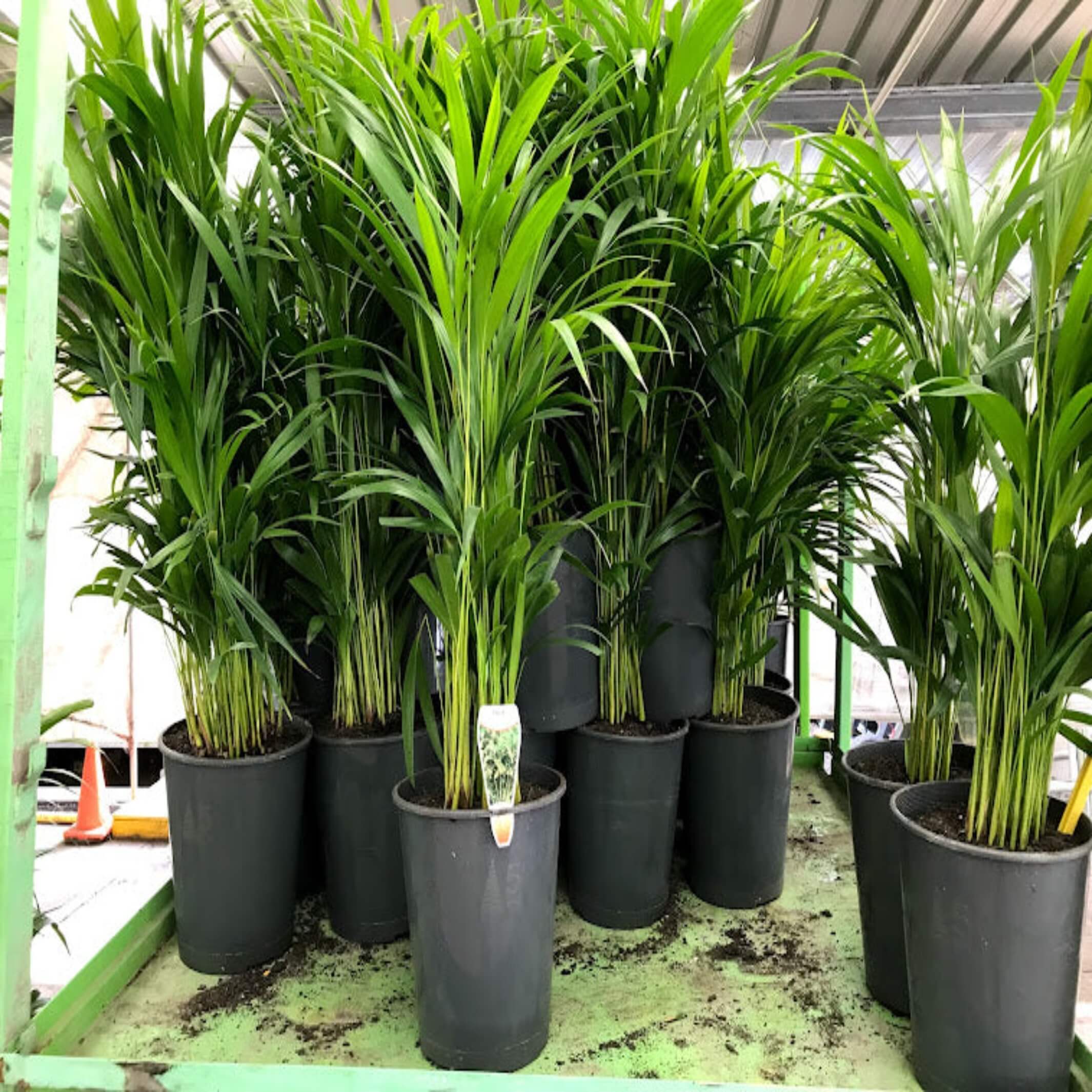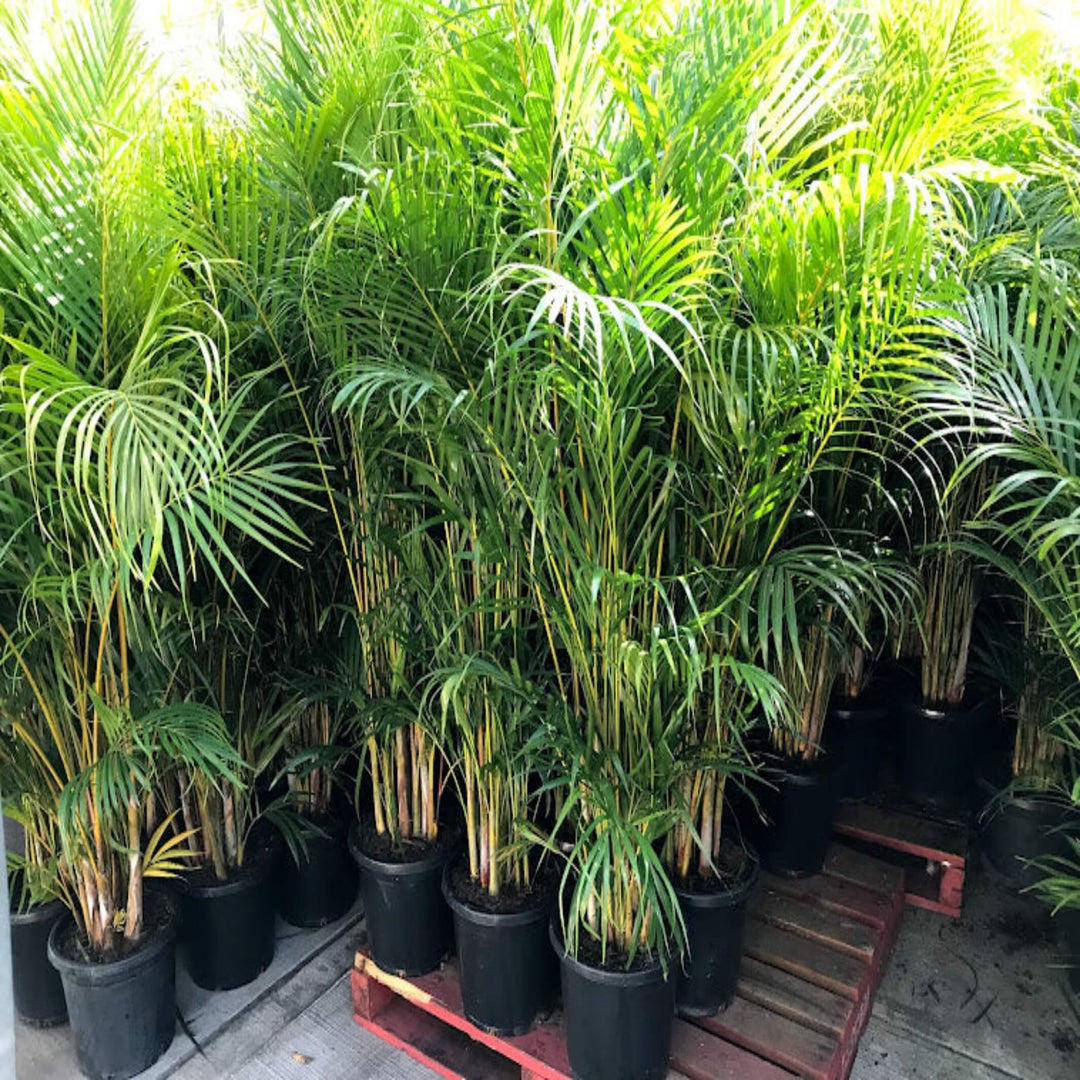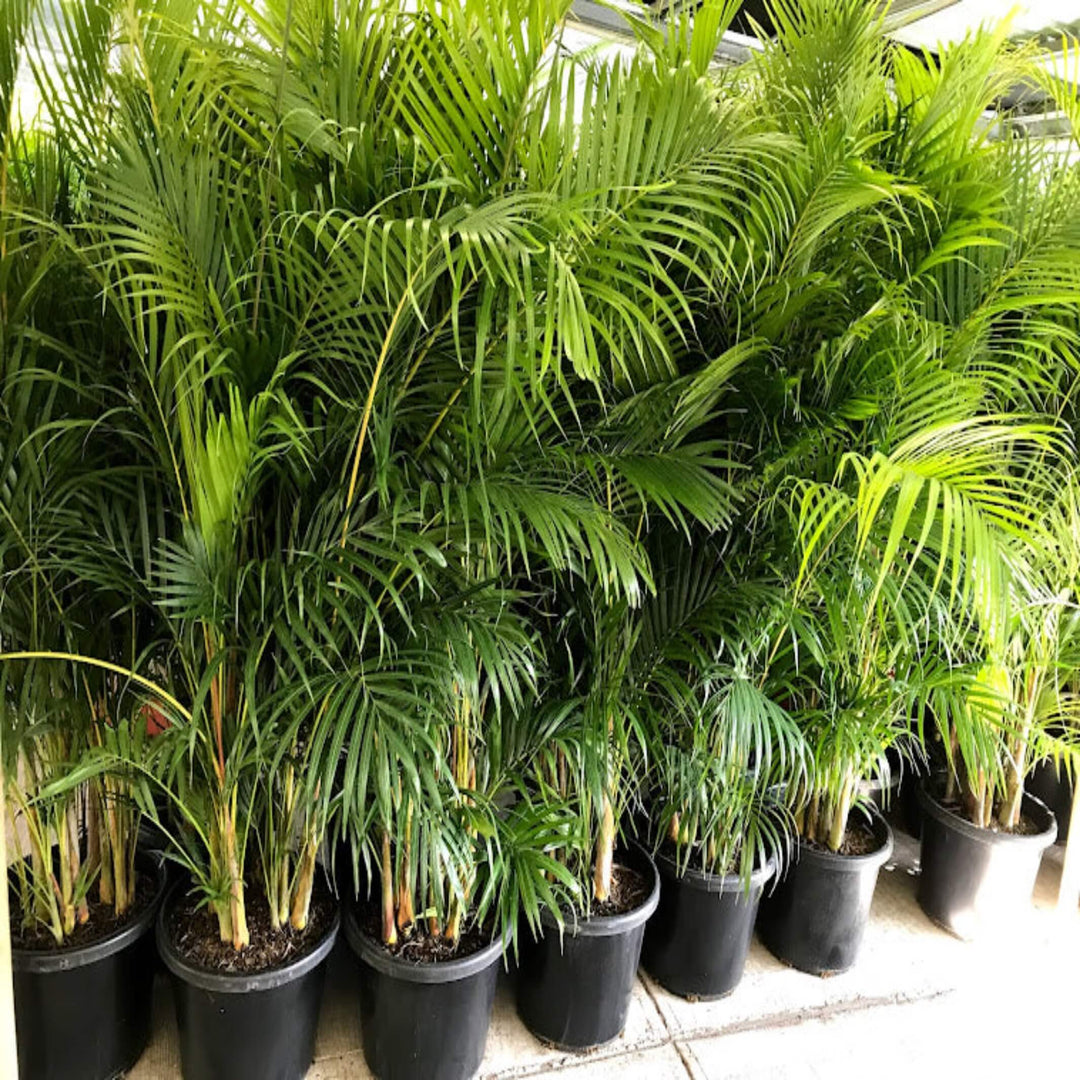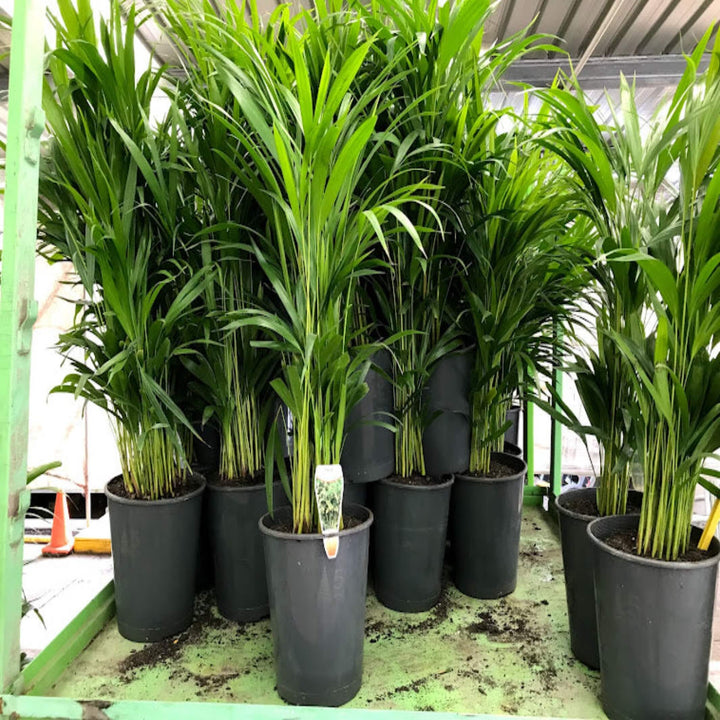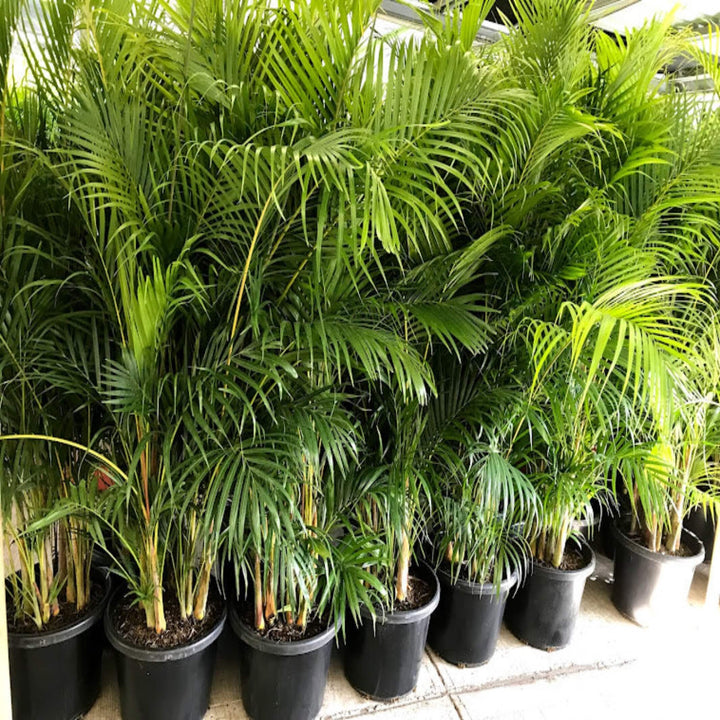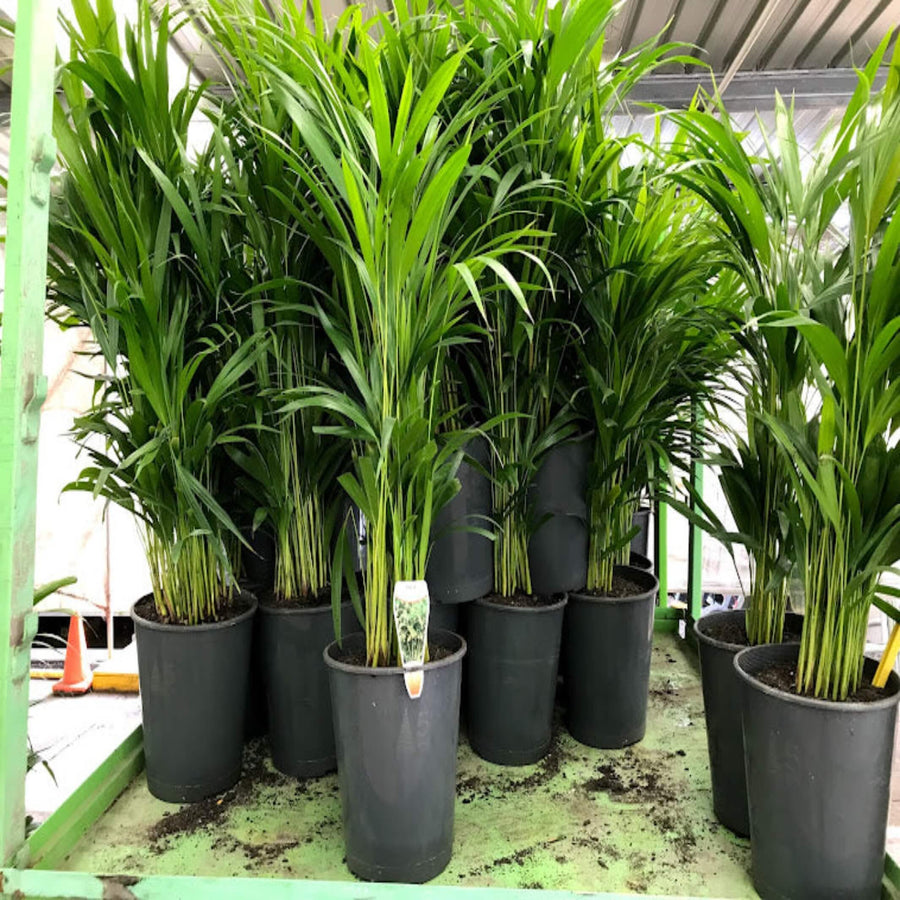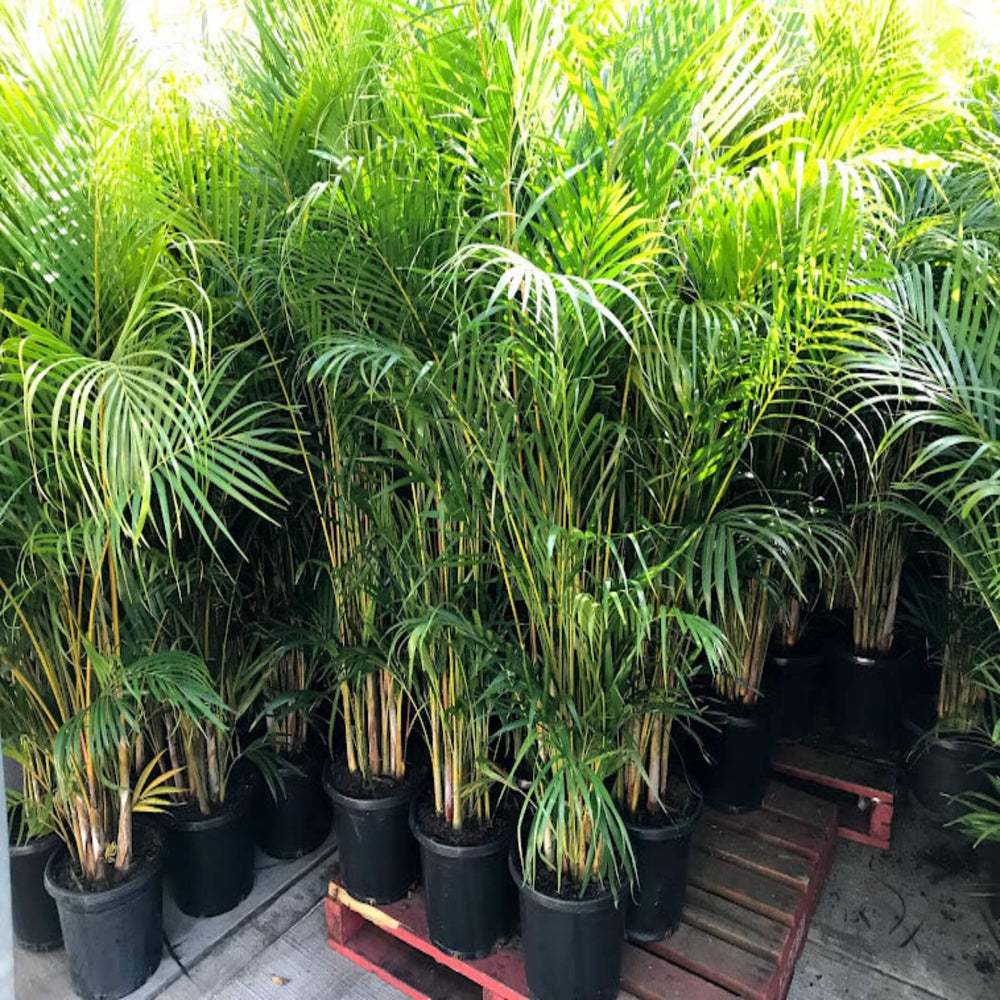Golden Cane Palm (Dypsis lutescens) – Australia’s Favourite Screening Palm
Lush. Tropical. Striking. The Golden Cane Palm is the ultimate statement for Australian homes and gardens.
Why Choose the Golden Cane Palm?
- Vibrant Appearance: Golden Cane Palms (Dypsis lutescens), also known as the golden palm or butterfly palm, are loved across Australia for their golden stems, graceful fronds, and dense clumping habit.
- Versatile Use: Perfect as a screening palm, tropical hedge, or stunning indoor feature.
- Air Purifying: Excellent for indoor use, helping to clean and freshen the air.
Golden Cane Palm Care & Growth
- Light: Thrives in full sun to part shade outdoors, and bright, indirect light indoors.
- Watering: Water regularly, allowing the top few centimetres (about 1 inch) of soil to dry out between waterings. Overwatering and poor drainage are common golden cane palm problems.
- Fertilising: Use a slow-release fertiliser in spring and summer for lush, green growth.
- Pruning: Remove yellow or dead fronds to keep your palm healthy and attractive.
Golden Cane Palm Size, Height & Growth Rate
| Feature | Details |
|---|---|
| Full Grown Height | 6–8 metres (20–26 feet) outdoors |
| Height in Pots (Indoor) | 1–3 metres (3–6.5 feet) – can be kept smaller |
| Spread | Up to 3 metres (10 feet) outdoors |
| Growth Rate | Fast-growing (30–60cm/year or 12–24 inches/year outdoors) |
| Root System | Vigorous, fibrous, and wide-spreading |
How to Keep Golden Cane Palm Small
For compact growth, keep your golden cane palm in pots and prune regularly. Repot every 2–3 years to refresh the soil and control size.
Indoor & Outdoor Versatility
- Indoors: Air-purifying, pet-friendly, and a top choice for adding lush greenery to homes and offices.
- Outdoors: Perfect for screening, hedging, or as a tropical feature. For a dense golden cane palm hedge, plant 1.5–2 metres (5–6.5 feet) apart.
- In Pots: Ideal for balconies, patios, and poolside areas. Use a premium potting mix and ensure good drainage.
Golden Cane Palm Root System & Planting Advice
Golden Cane Palms develop a vigorous, fibrous root system that spreads widely as the plant matures. Their roots are known for being aggressive in their search for moisture and nutrients. If planted too close to structures, pipes, paving, or pools, the roots can cause issues such as lifting, blockages, or competition with other plants.
- Best practice: Plant Golden Cane Palms at least 5–10 metres (16–33 feet) from buildings, pipes, pools, and paving to minimise the risk of root-related problems.
- For smaller gardens or patios, grow golden cane palms in pots or containers to keep their root system contained.
- Use root barriers if you need to plant near sensitive areas.
Frequently Asked Questions
-
How tall do golden cane palms grow?
Outdoors, they reach 6–8 metres (20–26 feet). Indoors, they typically grow 1–3 metres (3–9 feet), but can be kept smaller with pruning and maintaining in a pot 40cm wide or smaller. -
Are golden cane palms invasive?
Golden Cane Palms have a vigorous, spreading root system that can cause problems if planted too close to structures or pipes. Always allow plenty of space for their roots. -
Can golden cane palms grow in full sun?
Yes, they thrive in full sun to part shade outdoors and in bright, indirect light indoors. In full sun, the plant goes quite yellow and looks better with some shade. -
How fast do golden cane palms grow?
They are fast-growing, adding 30–60cm (12–24 inches) per year outdoors with proper care. -
How often to water golden cane palm?
Water when the top 2–3cm (about 1 inch) of soil feels dry. Avoid letting the plant sit in water.
Shop Golden Cane Palms in Australia
Choose from a range of sizes, including full grown golden cane palms, dwarf golden cane palms, and potted options for both indoor and outdoor use. All our golden cane palms are grown for Australian conditions and delivered healthy and ready to thrive.
Transform your space with the Golden Cane Palm – the #1 palm for screening, hedging, and tropical gardens in Australia. Order your Dypsis lutescens today and enjoy golden beauty all year round!
Light requirement: Full Sun, Part sun/part shade, and Bright indirect sunlight
Water requirement: Medium
Watering frequency:
Soil: Moist and fertile well draining potting mix with slow release fertiliser in spring.
Skill level: Beginner
Growth rate: Intermediate
Suitable for containers: Yes
More info:
External links to more info:
Drought tolerance: Medium
Frost tolerance: Low
Wind tolerance: Medium
Disease and pest susceptibility:
Mature height:
Mature width:
Suitable for shaping: No
Colour: Green
Variegation: No
Size: Large
Seasonality: Evergreen
Flowering: Yes; but primarily grown for it's foliage
Flower colour: Yellow
Flower fragrant: No
Flowering season: Summer
Fruit: Insignificant
Let customers speak for us




